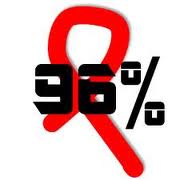
Are You Ready to start Treatment As Prevention (TasP)? What is your agency’s role in the implementation of this promising new HIV prevention tool? How will it change your community’s prevention agenda? HIV Prevention Trial Network (HPTN) study 052 showed us that starting HIV-positive individuals in a treatment regimen early and reducing their viral load to undetectable can cut the risk of HIV transmission by as much as 96 percent.
Next week is the National HIV Prevention Conference (NHPC). In advance of this meeting, I want to share my thoughts on TasP. Without any inside information from the Centers for Disease Control and Prevention (CDC), my personal belief is that they may retool HIV prevention programs to make TasP a cornerstone for our work. Behavioral interventions like “Prevention for Positives” will continue to be important, and HIV testing will need to remain a top priority, but now these programs will support TasP and the National HIV/AIDS Strategy (NHAS).
TasP needs a Plan with Guiding Principles. 052 worked in the study’s controlled environment - now its time for real life application. Planning may differ depending on the region, but certain guiding principles should be consistent everywhere. This is essential for both protecting the rights of People with AIDS (PWAs) and for ensuring the integrity of TasP.
Guiding Principles For Implementing TasP:
- Transparent Planning Process
- Can’t Force People Onto Treatment
- Treatment May Not Be For Everyone
- Treatment Education Is Essential
- Ensure Mechanism For Payment
- Support To Stay Compliant
- Regular Viral Load Testing
- Stable Housing
- PWAs Should Lead The Way
Transparent Planning Process
TasP is about lowering the community’s viral load to reduce the transmission of HIV. It requires the active participation of People with AIDS, Healthcare Providers (HP), Community Based Organizations (CBOs), Health Departments (HDs), Federal Government, and the Pharmaceutical Industry. For this process to work, planning and implementation should be:
- Transparent
- Have Broad Community Input, particularly PWAs
- Promote Measurable Results
TasP needs the cooperation of hundreds of thousands of PWAs. That is why transparency and community input are so essential.
With some prevention programs, it’s hard to measure how many HIV infections were averted. TasP may provide an indirect way to evaluate this question by measuring the number of PWAs on treatment and the percentage with an undetectable viral load against any reductions in HIV infections within that community. While it will take time to evaluate the results, TasP can give us a denominator that is readily available, measurable, and can withstand scientific scrutiny.
Can’t Force People Onto Treatment
Given the need for daily adherence to medications, forcing individuals onto treatment will not work.
We are asking PWAs to make a lifelong commitment to stay adherent to their medications. Given the millions of PWAs around the world who currently do so, this is certainly possible. However, TasP would require a doubling, if not tripling of the number of people currently on treatment in order to receive significant prevention benefits. PWAs must lead the way, and must have the right to chose for themselves whether they should be on treatment.
Treatment May Not Be For Everybody
For a variety of reasons, treatment may not work for someone at this particular moment in their life. That has to be OK.
Everyone does not have to be on treatment in order for a community to get the benefits of TasP. PWAs don’t need any more judgment or discrimination. The success of TasP depends on People with AIDS. They must closely monitor the implementation of this important program. The last thing we need is for people to stop and/or not start treatment. Choice will always be a critical component. That choice includes not going on treatment.
This goes back to the Denver Principles, which was all about empowering People with AIDS to take control of their destiny. Now, not only do they control their own destiny, but they may also be destined to save their community and end this epidemic.
Treatment Education
If we ask PWAs to make a lifelong commitment to be on HIV medications, then we have a responsibility to educate about those medications. From 1996 until 2000, Health Resources and Services Administration (HRSA) via the Ryan White Care Act provided funding to support treatment educators in CBOs. This was necessary because 1996 was the start of combination therapy and we needed to educate PWAs about the new drugs and how they worked. Once again, we need those treatment educators. This will mean increased funding to support treatment education, particularly as it relates to TasP.
It’s not reasonable to ask people to go on medications for the rest of their lives, without giving them the tools to understand those drugs, what may happen to their bodies, and how it may impact their lives. Without treatment education, TasP is destined to fail.
Mechanism For Payment
If we are asking PWAs to go on HIV medications, we must ensure that the resources are in place that gives access to these drugs for the rest of the life. Starting and stopping medication is a sure way to develop resistance. In the United States, HIV medications are paid via private insurance, personal resources, Medicare/Medicaid and as a last resort ADAP (AIDS Drug Assistance Program). Unfortunately, ADAP programs have a waiting list with over 9,000 people. As a result, the system is dependent on Patient Assistance Programs provided by the pharmaceutical industry. This is unsustainable.
The current mechanism for payment of medications is not set-up to support TasP. In fact, it might be impossible to move forward with TasP until the Affordable Care Act (ACA) is fully implemented. The community must plan for how to pay for hundreds of thousands of additional people enrolling in treatment. For example, if 100,000 new people receive HIV treatment over the next 24 months, how many would be covered by private insurance, Medicaid, ADAP or Patient Assistance Programs? Waiting 30 months until 2014 could mean 125,000 more Americans infected with HIV.
Support To Stay Compliant
Lack of adherence is probably the biggest barrier to achieving an undetectable viral load. Removing as many barriers to treatment adherence as possible is key to ensuring the success of TasP. This may require an analysis of all the structural and behavioral barriers to successful HIV treatment.
For example, one structural change that would support treatment adherence could be to provide 90 days of medication instead of the traditional 30 days. Not only is a 90 day supply cheaper, it is also more convenient. The community should also push for innovations in dosing. For example, a monthly pill would revolutionize HIV treatment and adherence.
In addition to the structural changes, behavioral support programs are important to help PWAs stay compliant. As part of their treatment education, HIV treatment adherence tools will be important to help PWAs maintain an undetectable viral load.
Regular Viral Load Testing
Viral load testing is an essential component to fully implement TasP. The costs of this testing needs to be built into the provision of care. It is not enough to just do CD4 counts.
We need cheaper and more rapid viral load tests. At a minimum, the cost for viral load testing should be reduced due to a significant increase in the volume of testing.
Stable Housing
As activists like to say “Housing Is Prevention”. If an individual does not have stable housing, all other issues tend to fall by the way side, including health care. Even the National HIV/AIDS Strategy and the National Prevention Strategy acknowledge this fact. One of the best ways to ensure compliance with HIV treatment is to support stable housing for PWAs. The Ryan White Care Act and Housing Opportunities for People with AIDS (HOPWA) are an important part of stopping this epidemic. Wouldn’t it be ironic if the programs that were started to support the health of those affected by the epidemic are the exact same programs necessary for ending the epidemic?
Housing for PWAs provides a stable living situation, which in turn supports compliance with HIV treatment. Adherence to HIV treatment is essential to maintaining an undetectable viral load, which is the start for reducing the community’s viral load. Reducing the community’s viral load is the way to end the epidemic.
PWAs Lead The Way
All the reasons noted above provide the rationale for why PWAs must lead the way. There will be critical roles for CBOs, HDs, HPs, the federal government and the pharmaceutical industry, but its going to take People with AIDS to end this epidemic. Personally, I think that’s wonderful. It could be the perfect ending to this unprecedented tragedy.
Please join me as I discuss these guiding principles in more detail at the opening plenary of the National HIV Prevention Conference (NHPC). If I miss you at NHPC, then I look forward to seeing you at the United States Conference on AIDS in Chicago Nov. 10-13th (http://www.2011USCA.org). I look forward to addressing all of the issues discussed in my “Are You Ready?” series of musings. Thank you for all that you do to fight AIDS. We can end this epidemic!







Comments
Comments